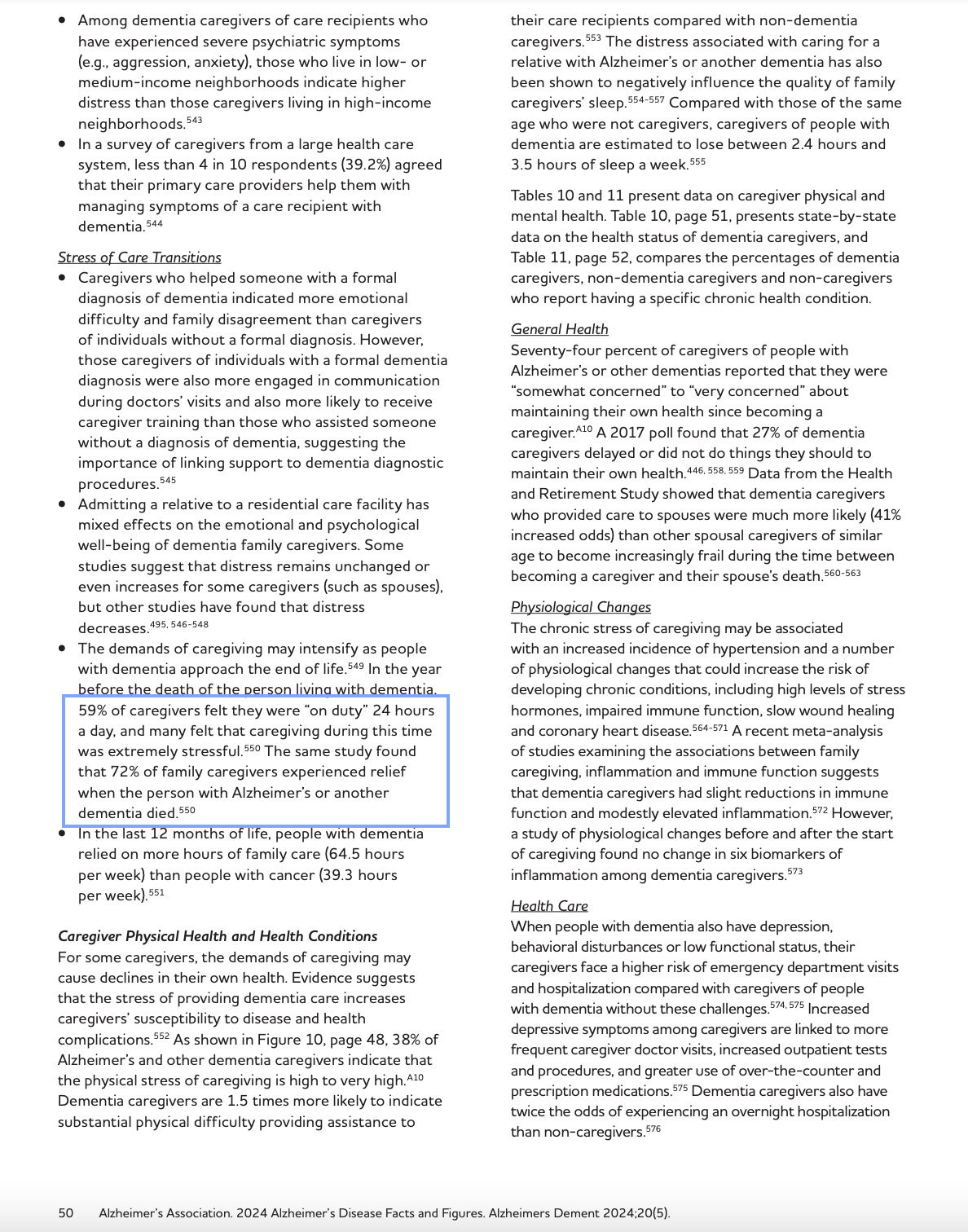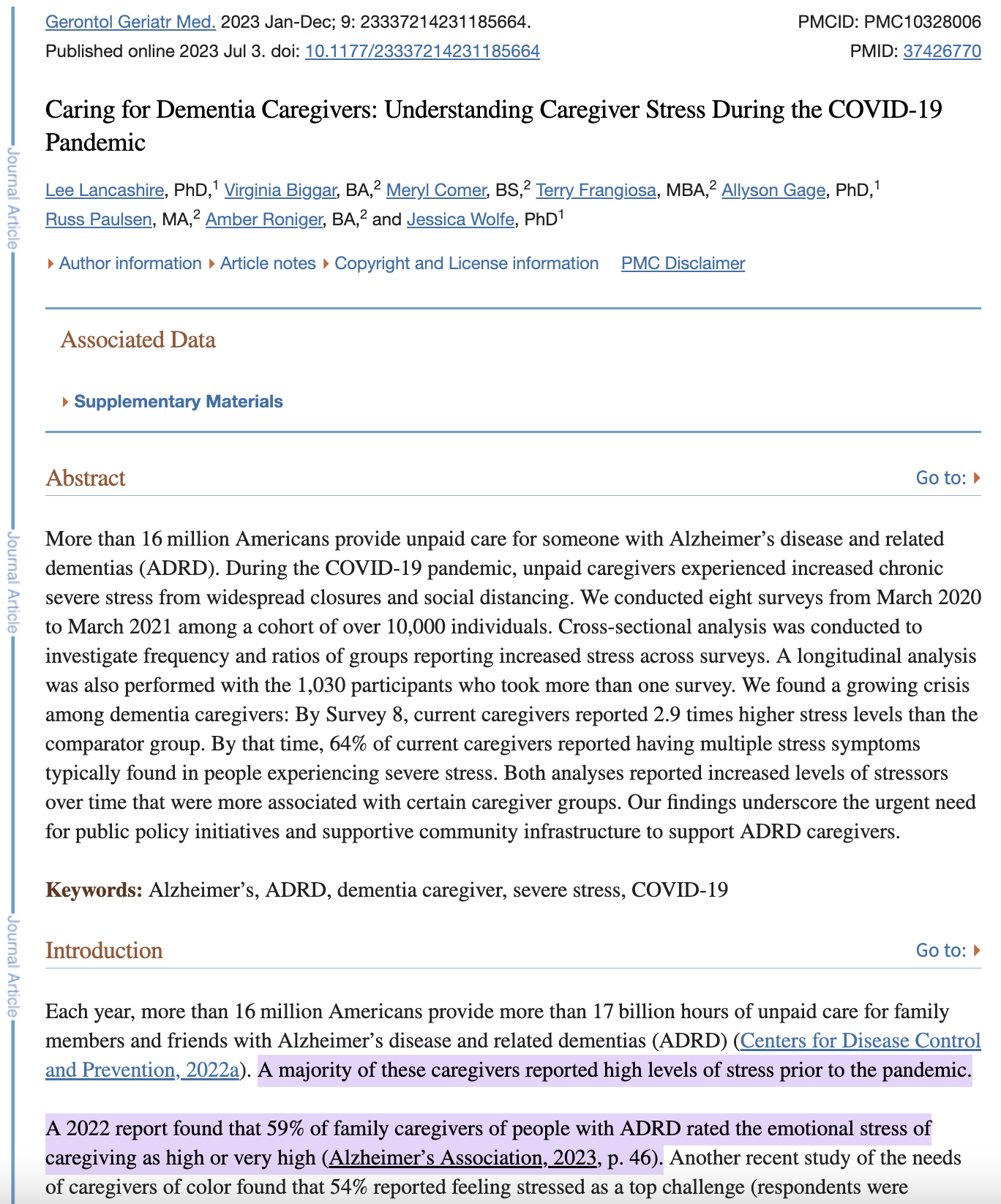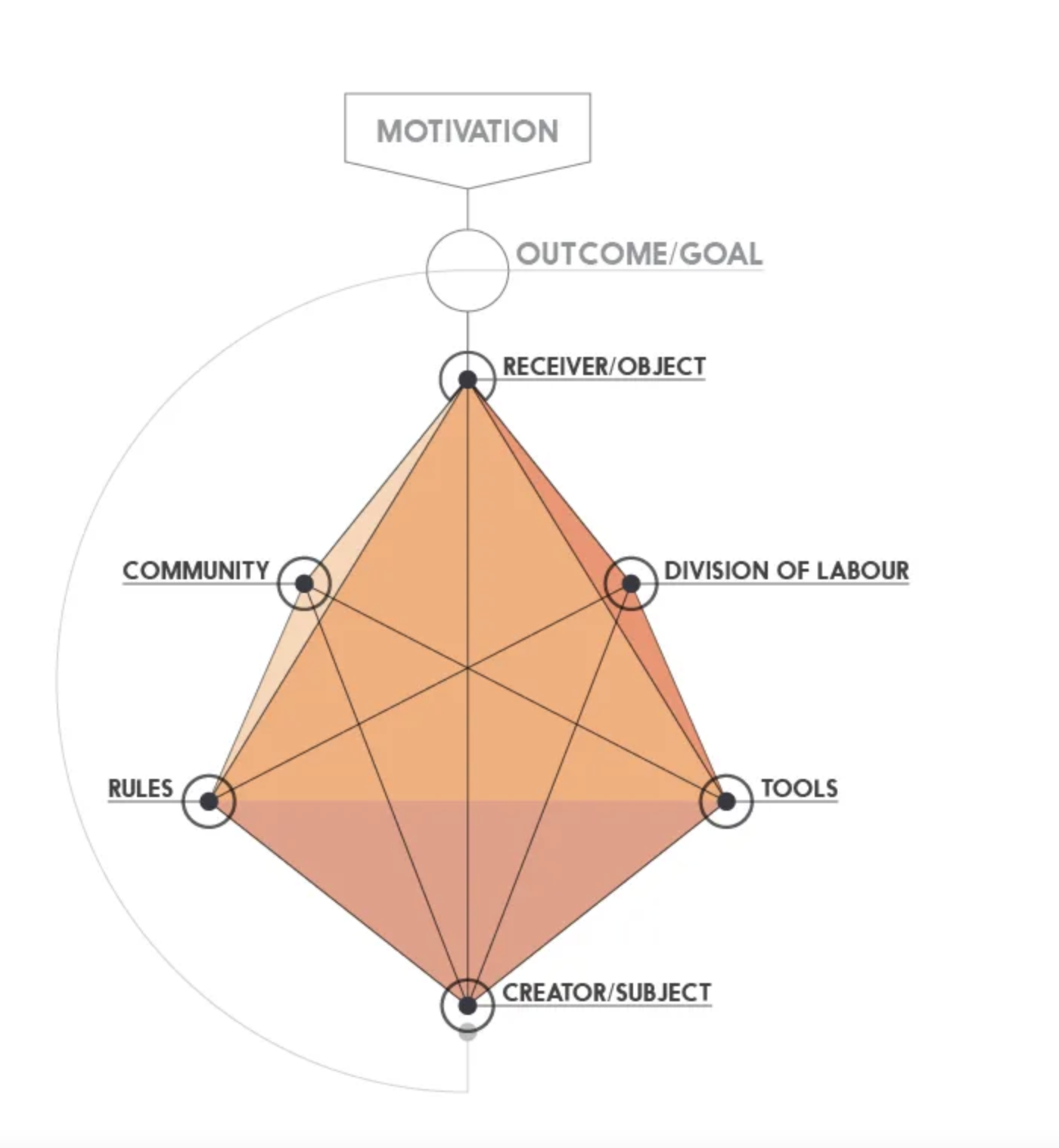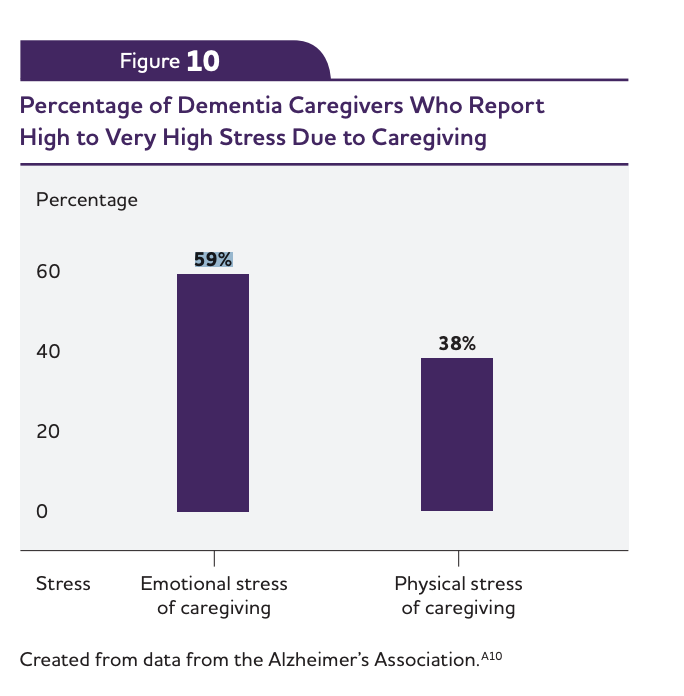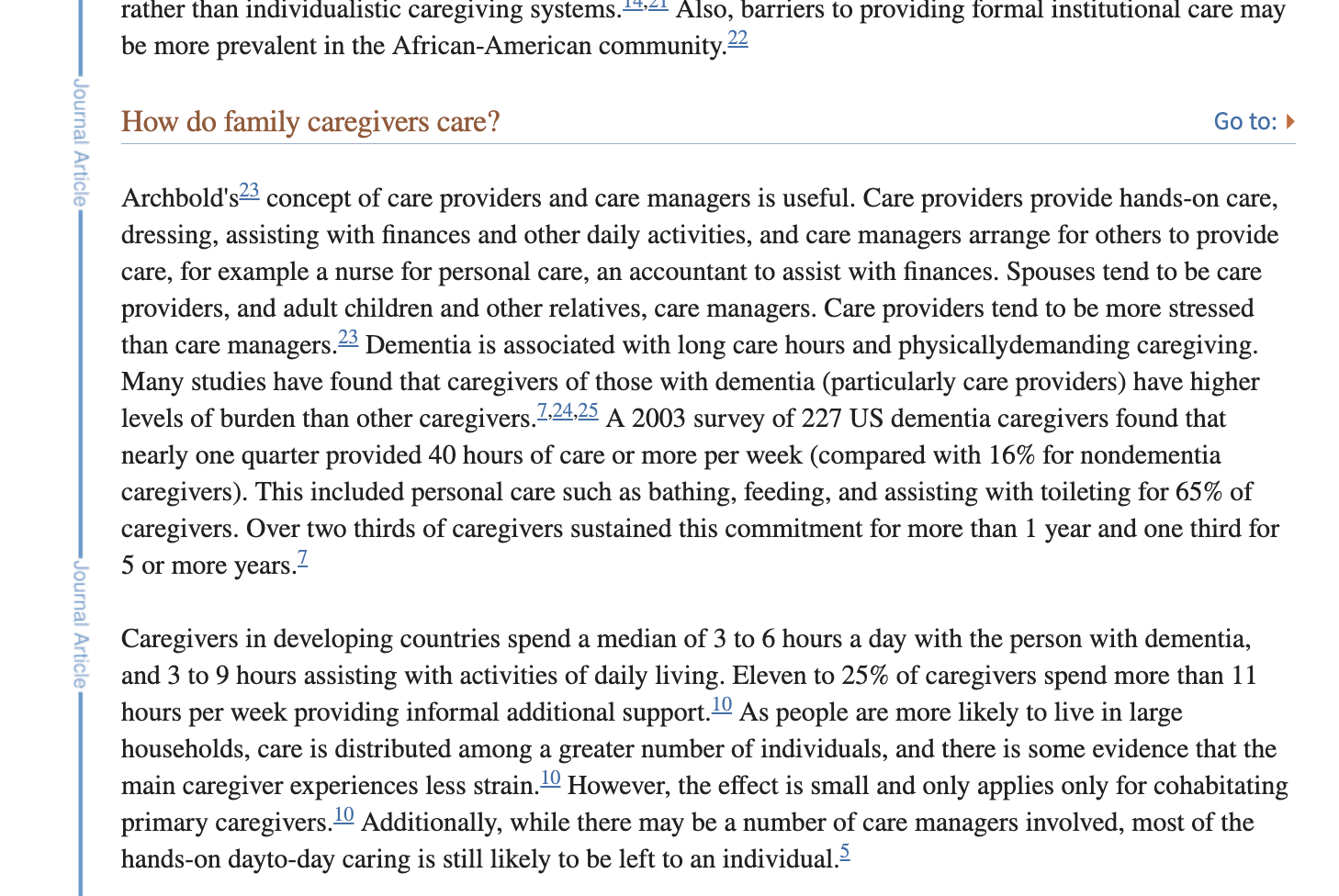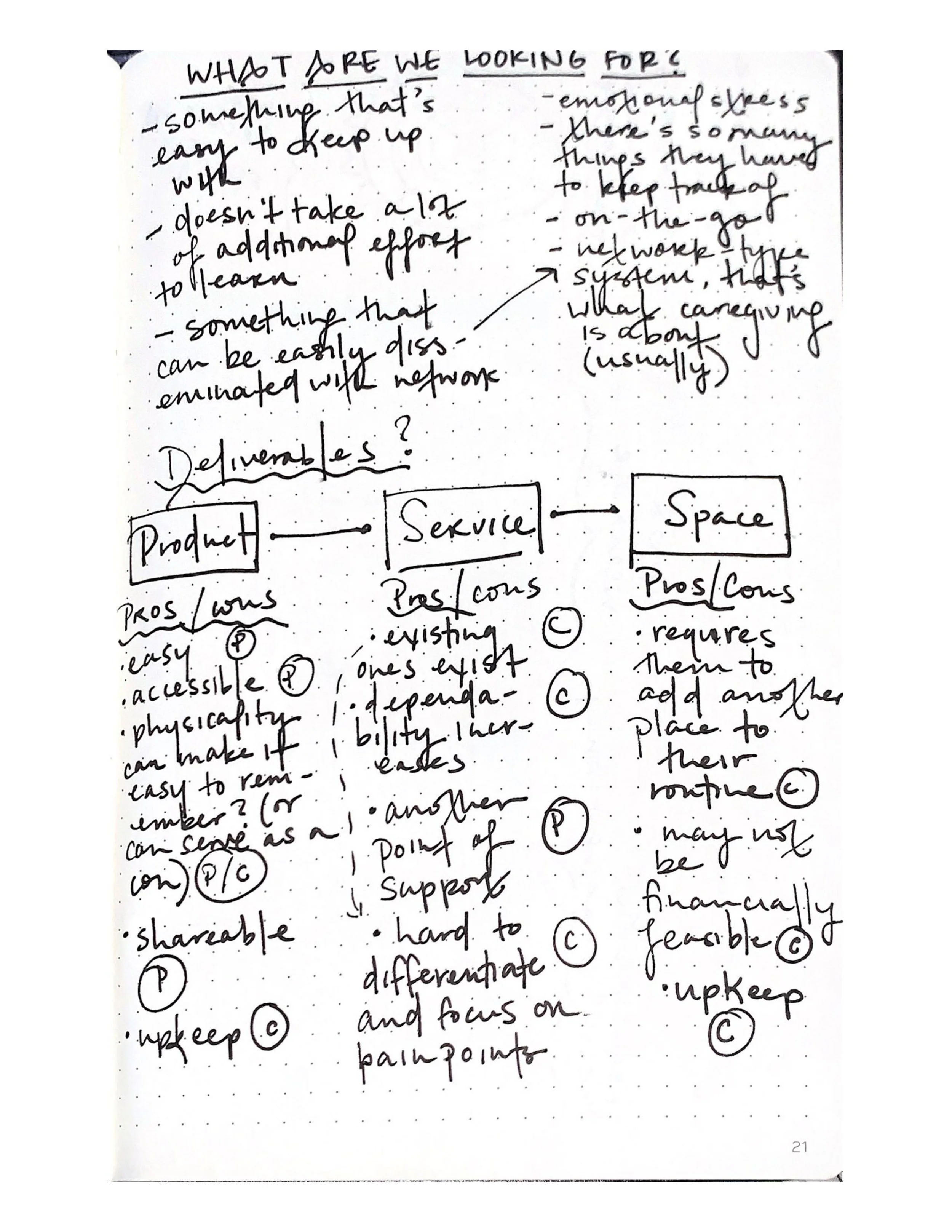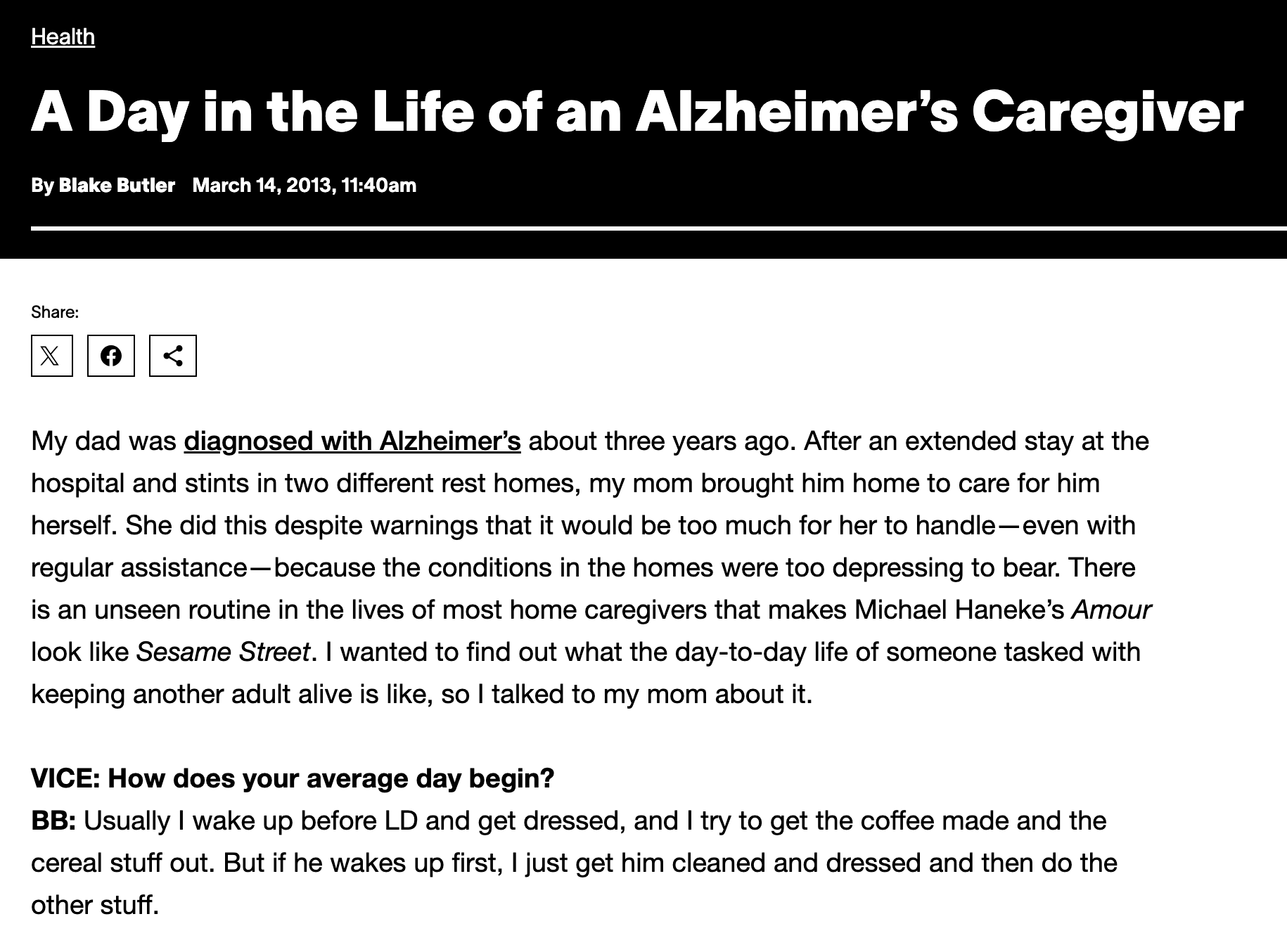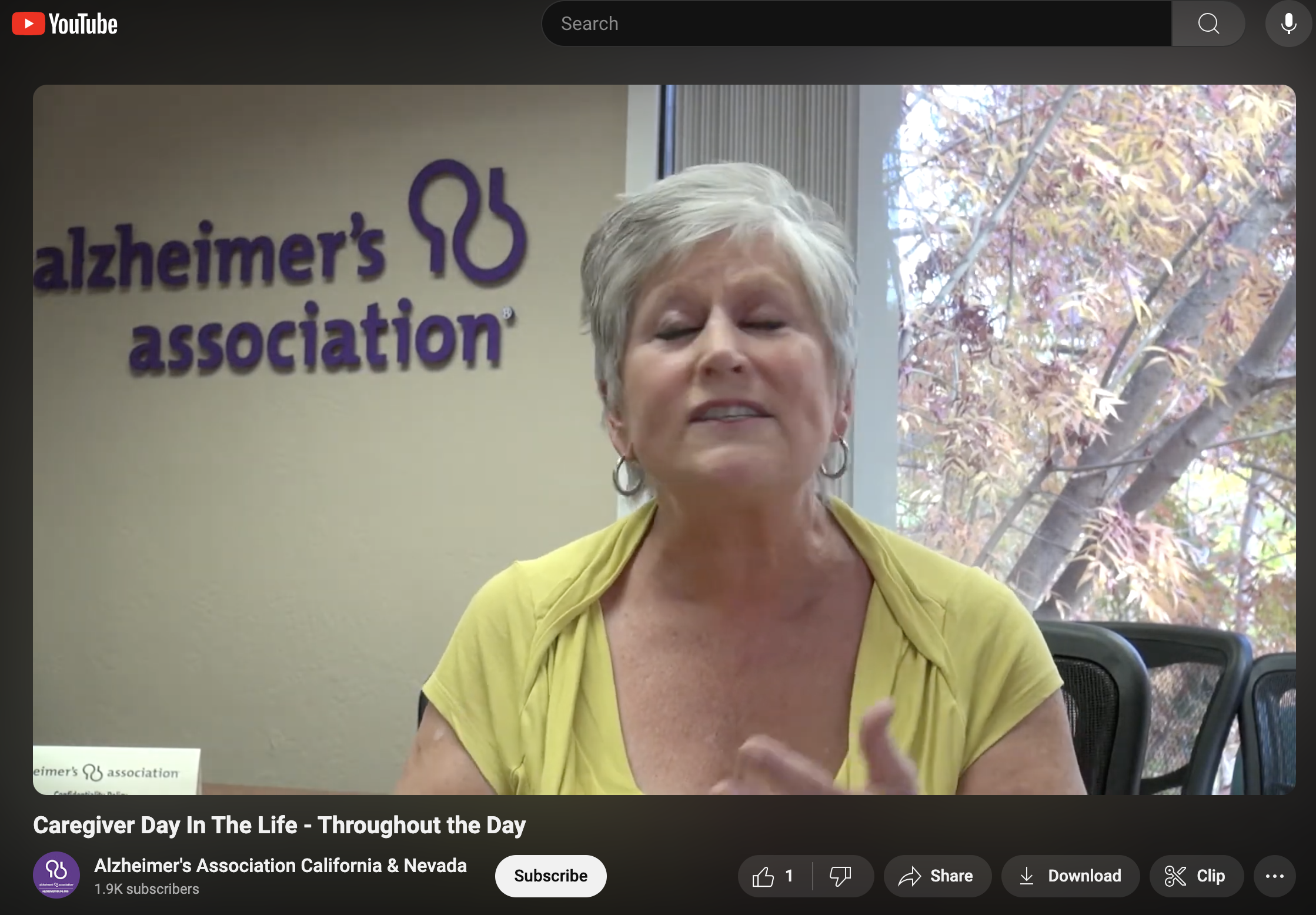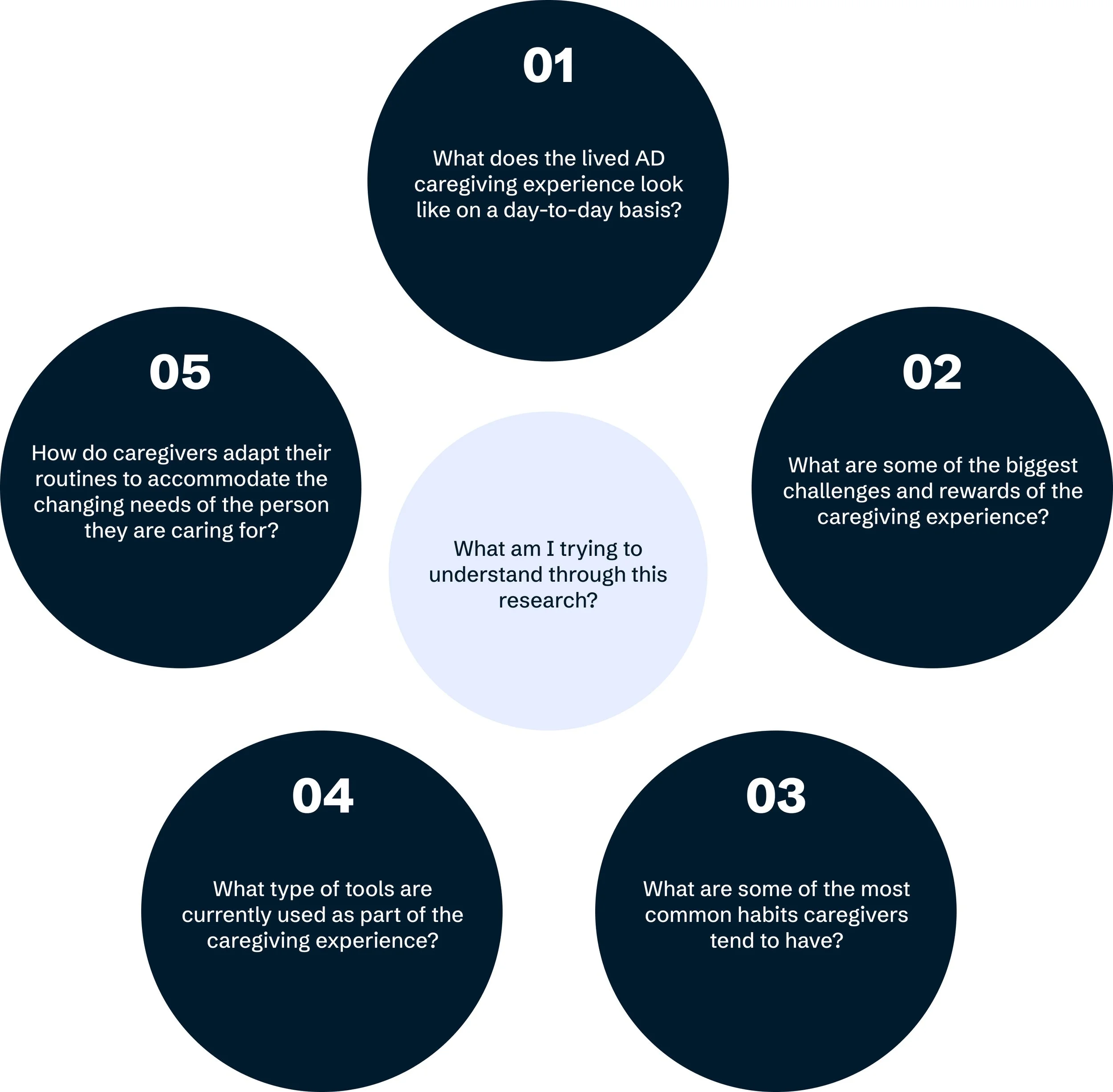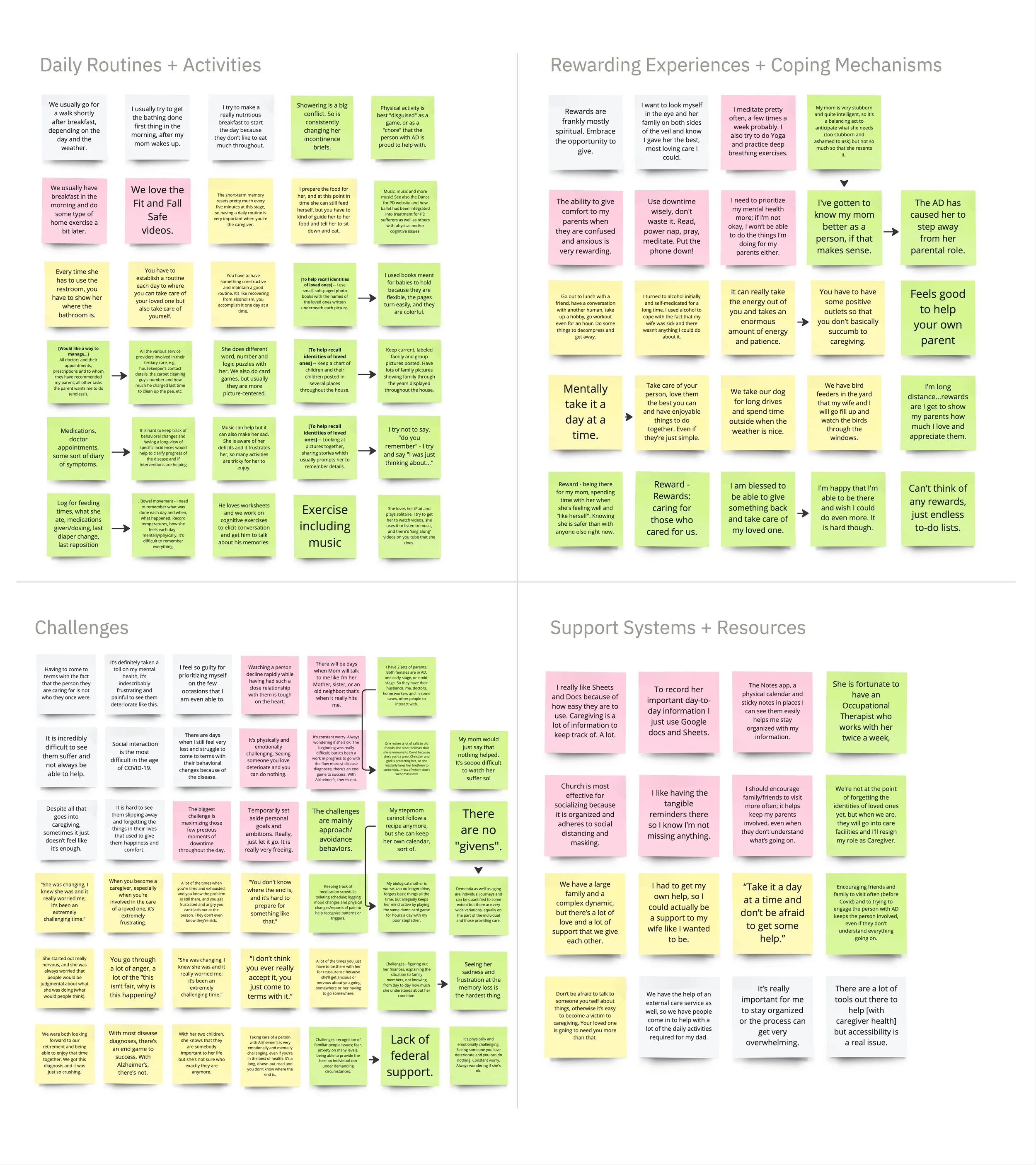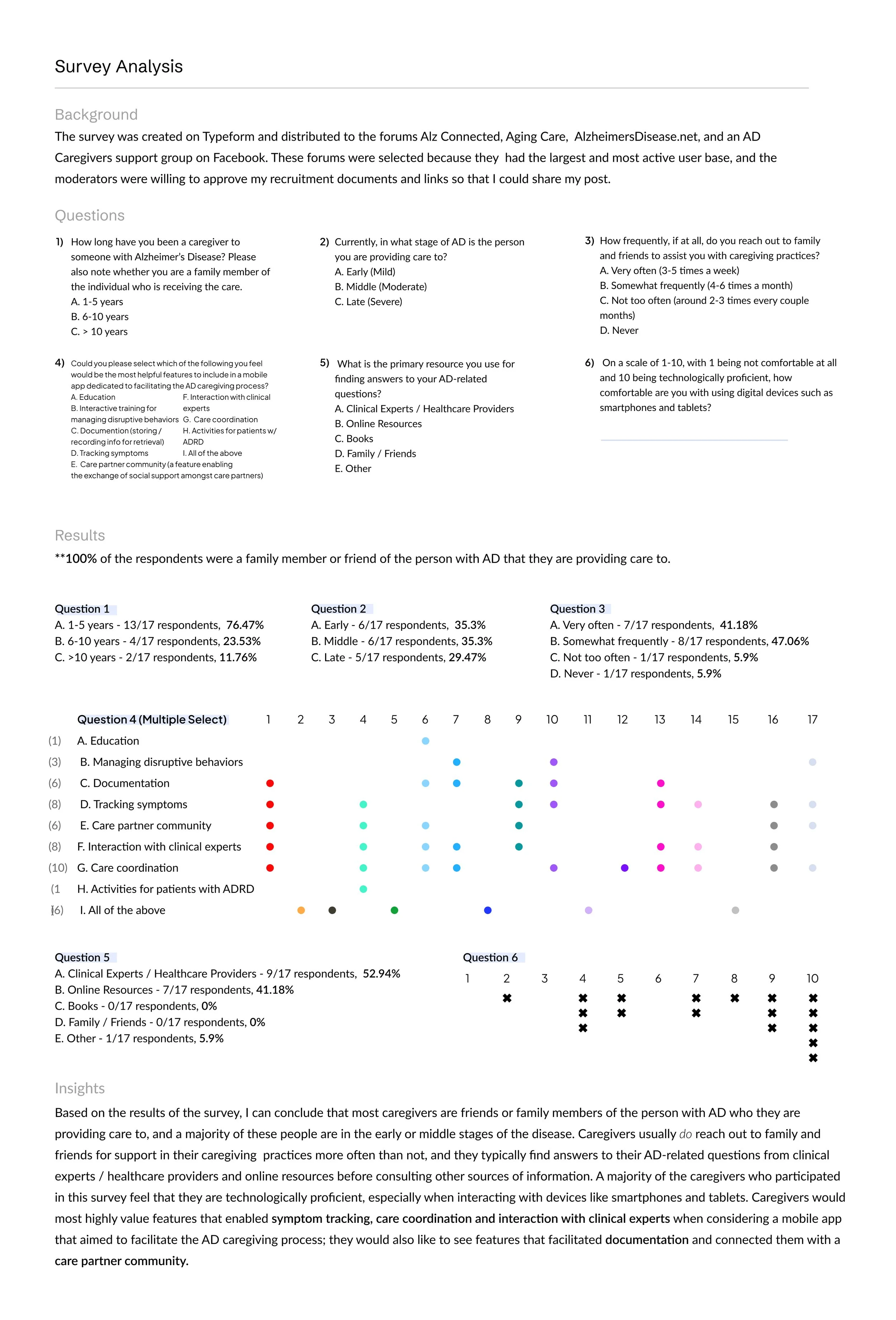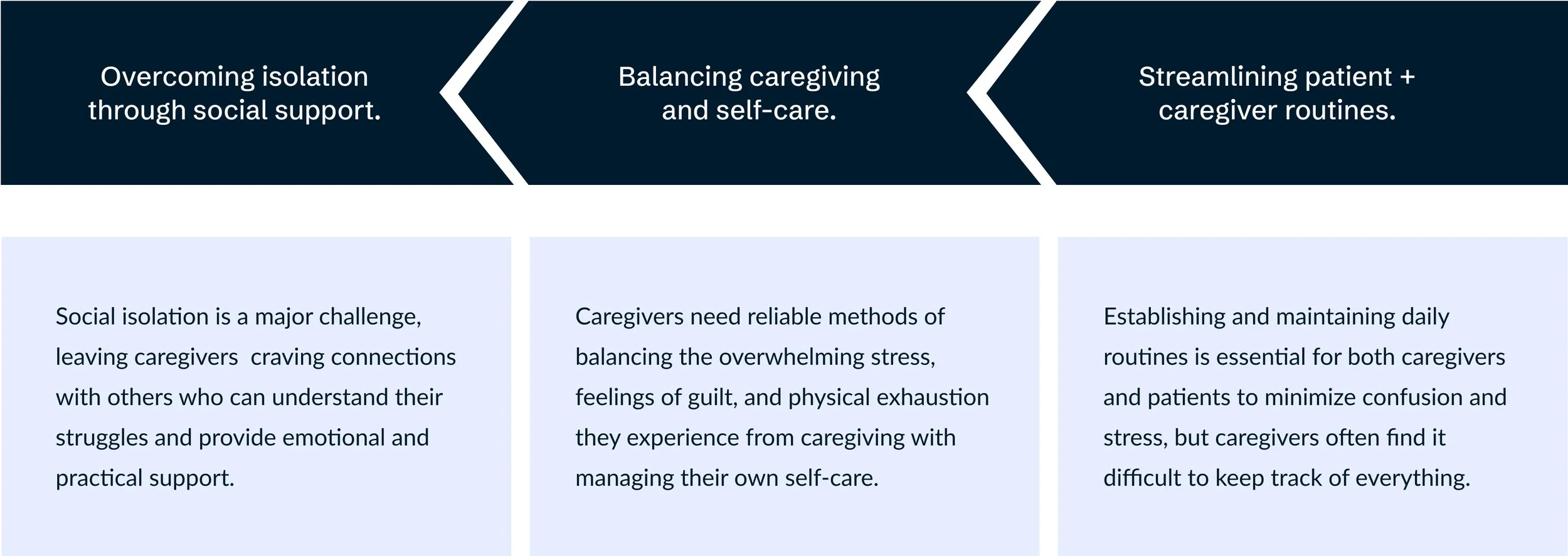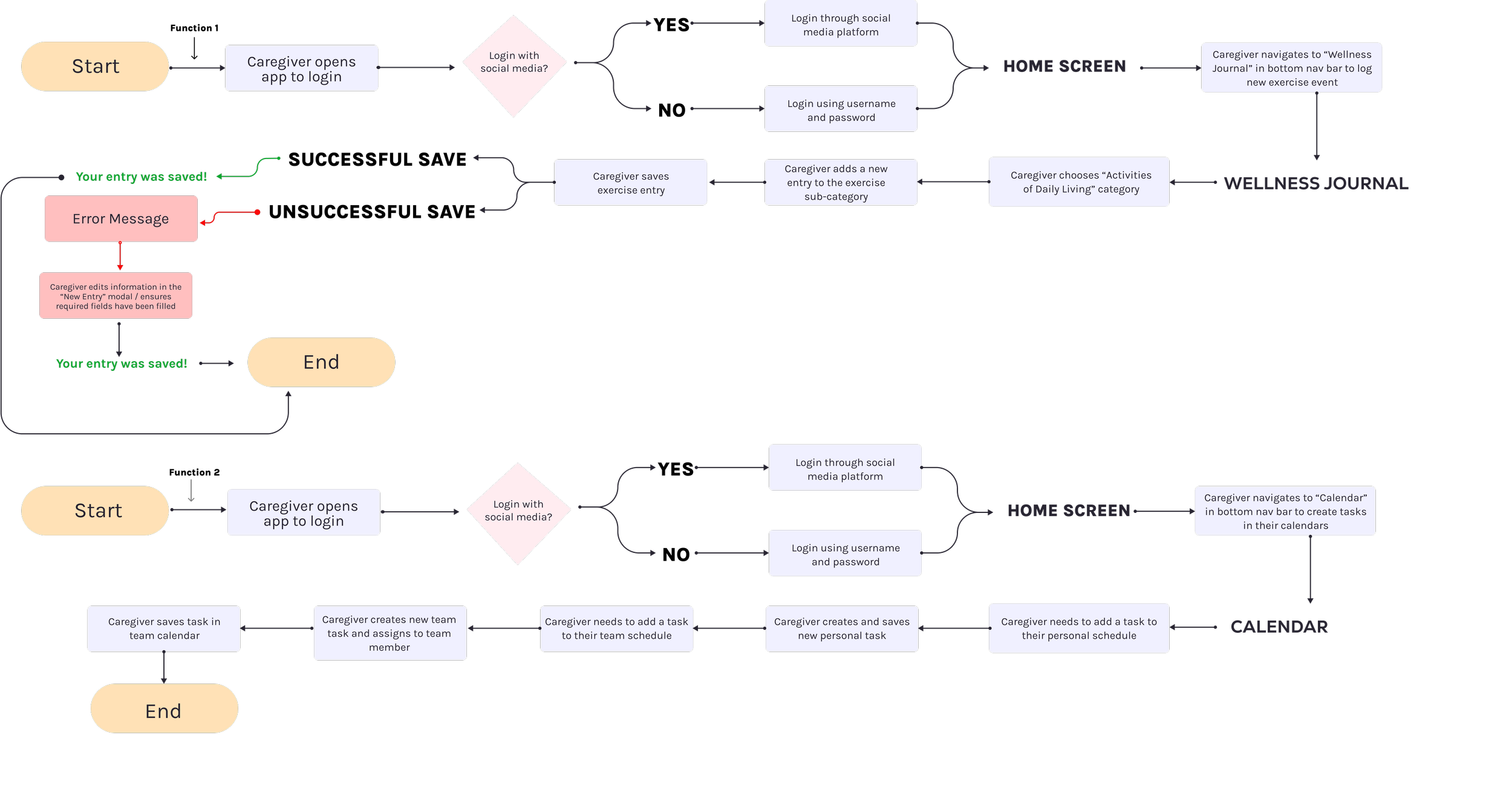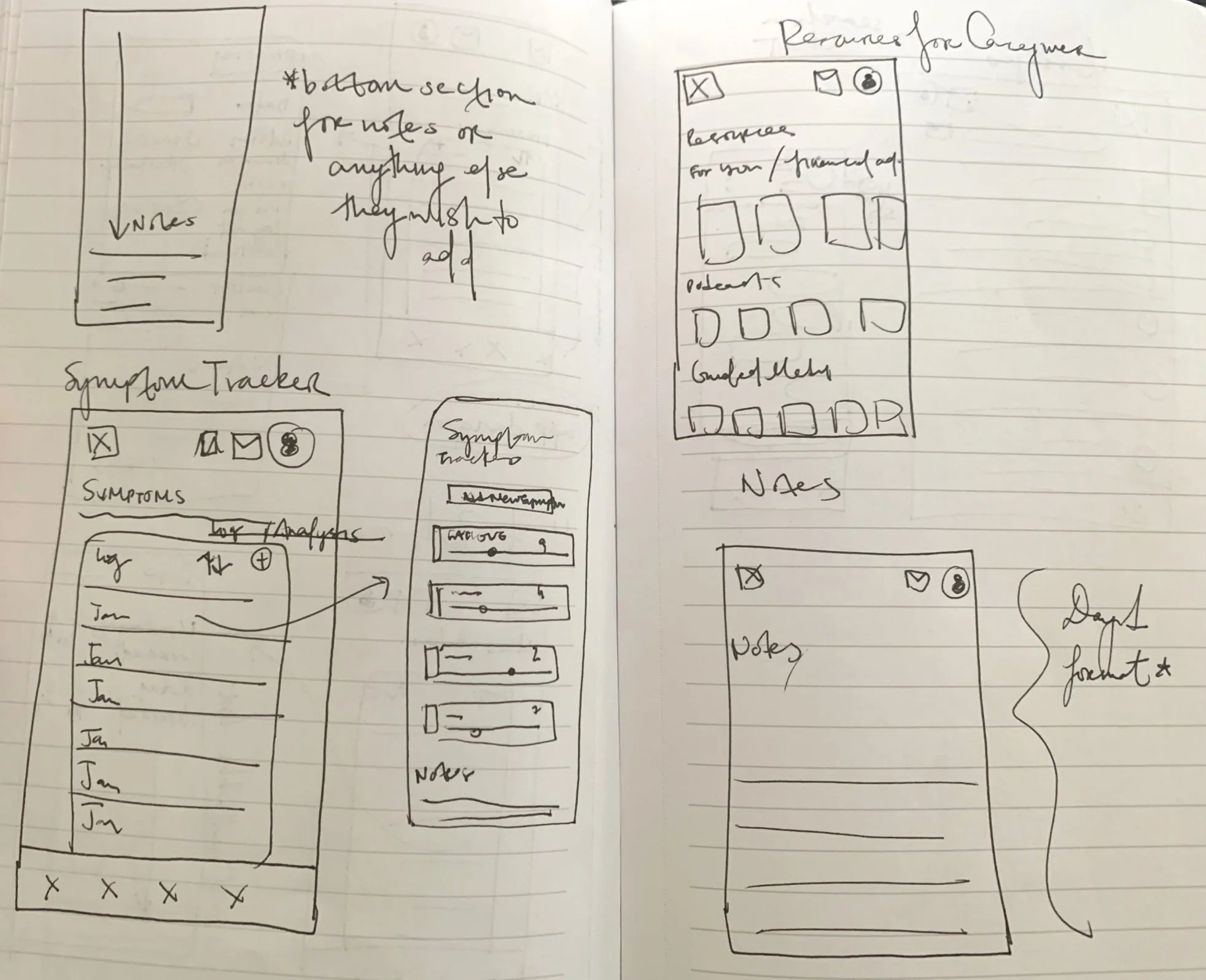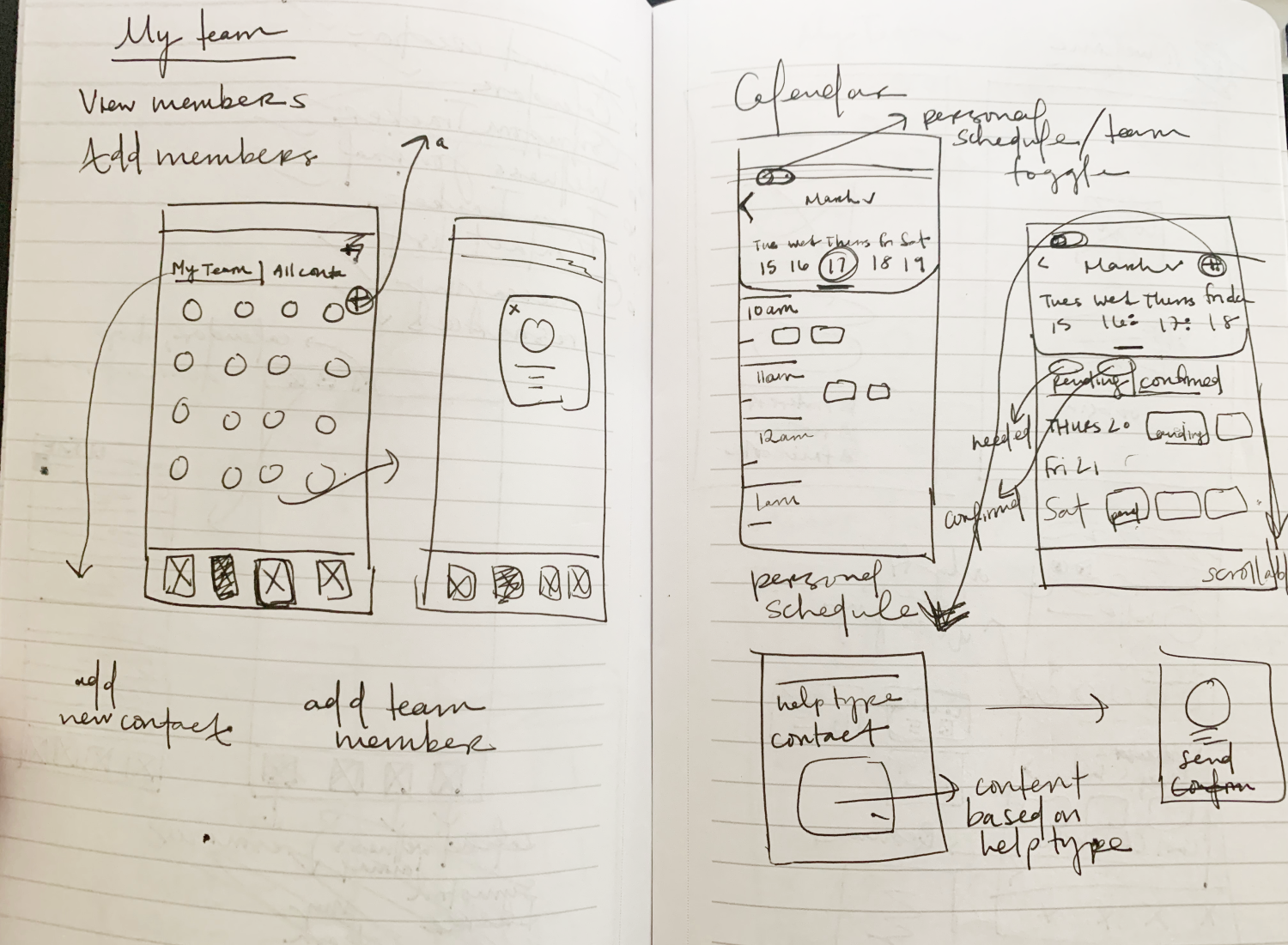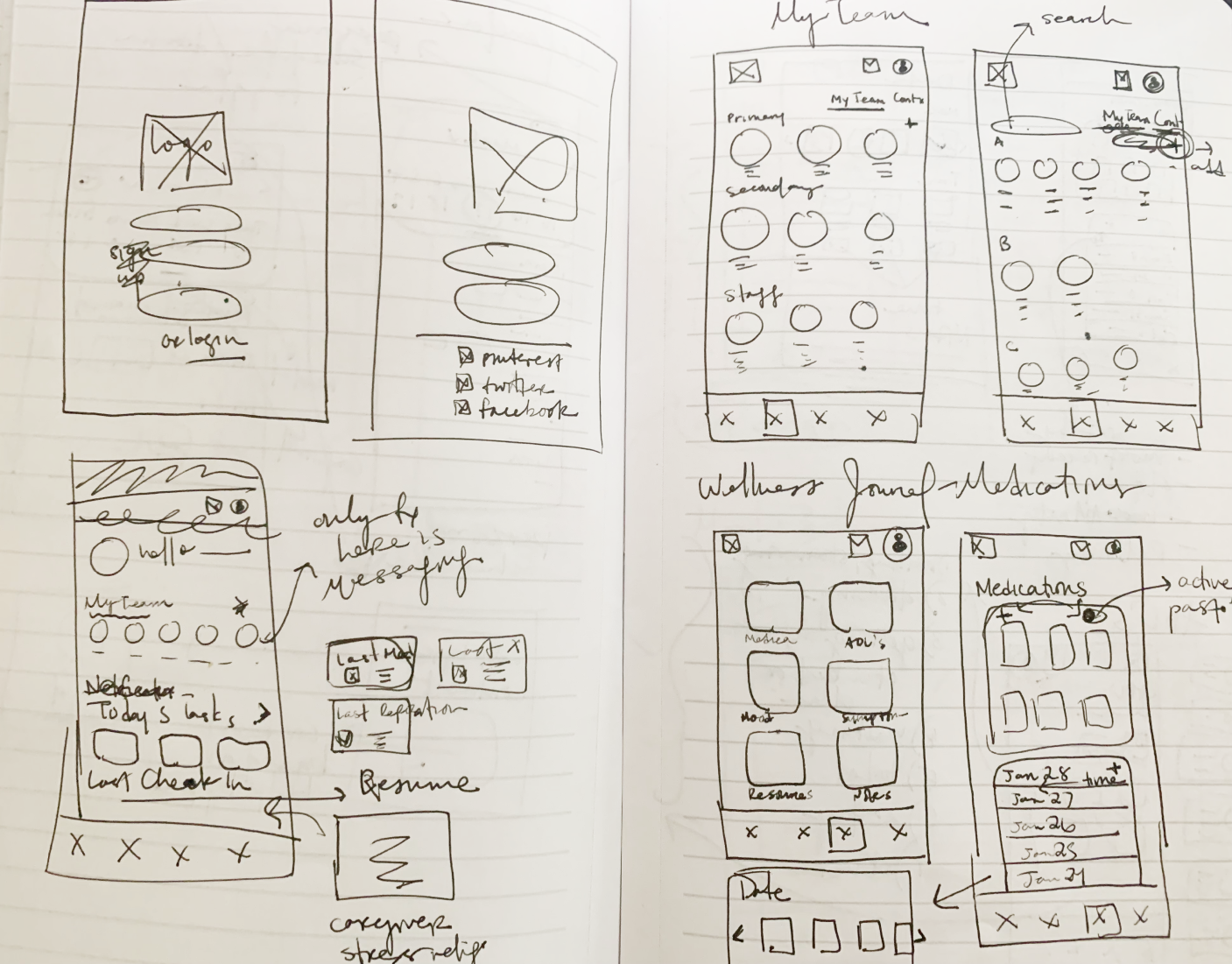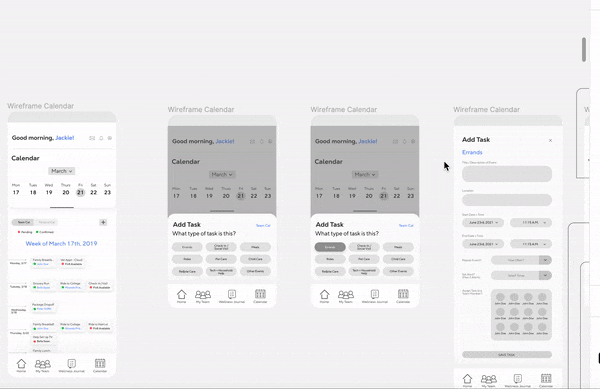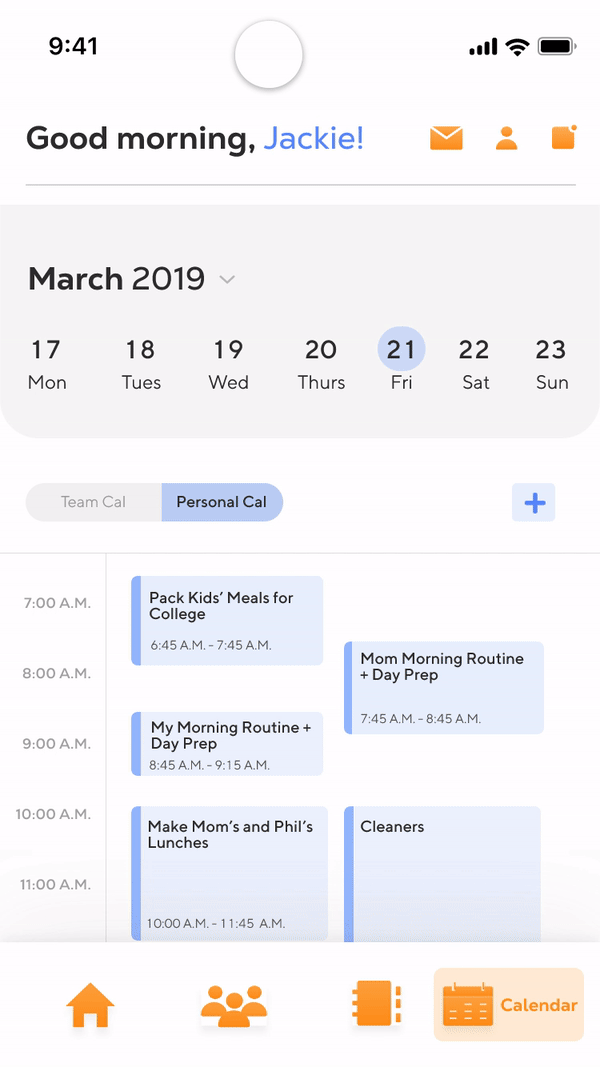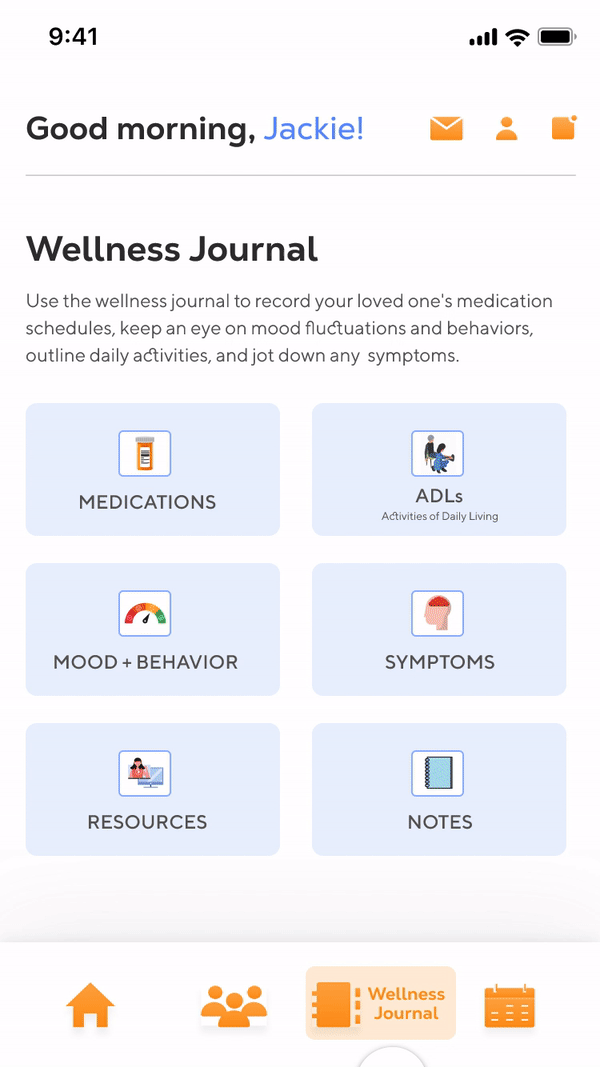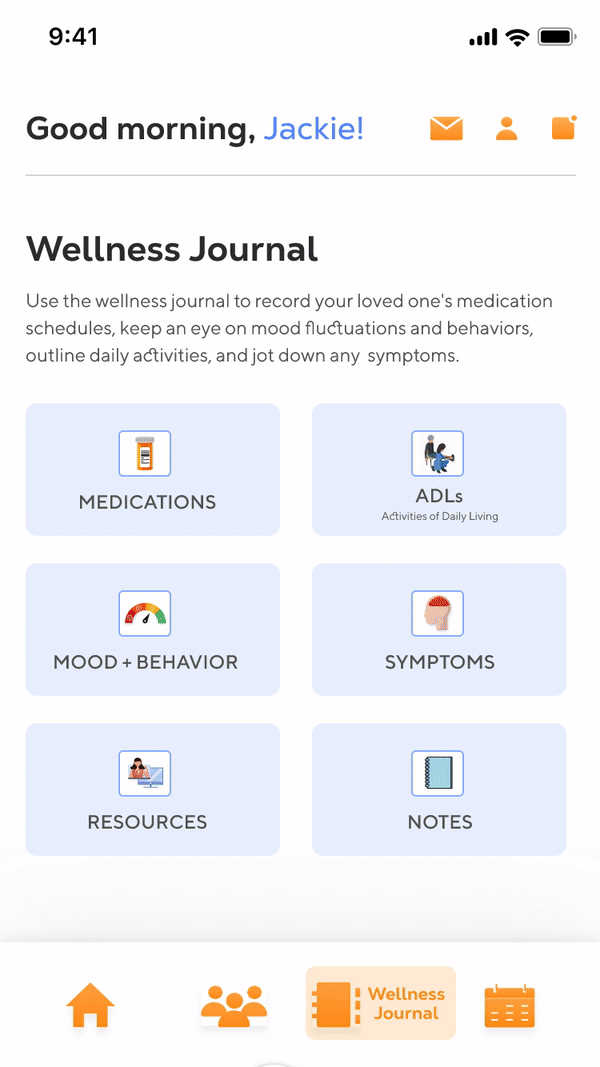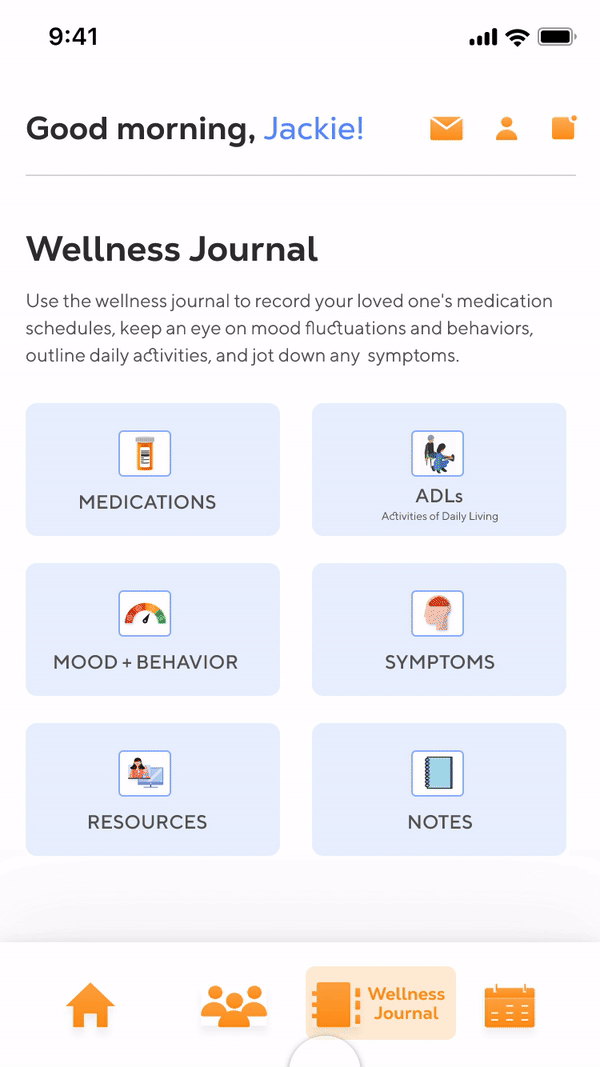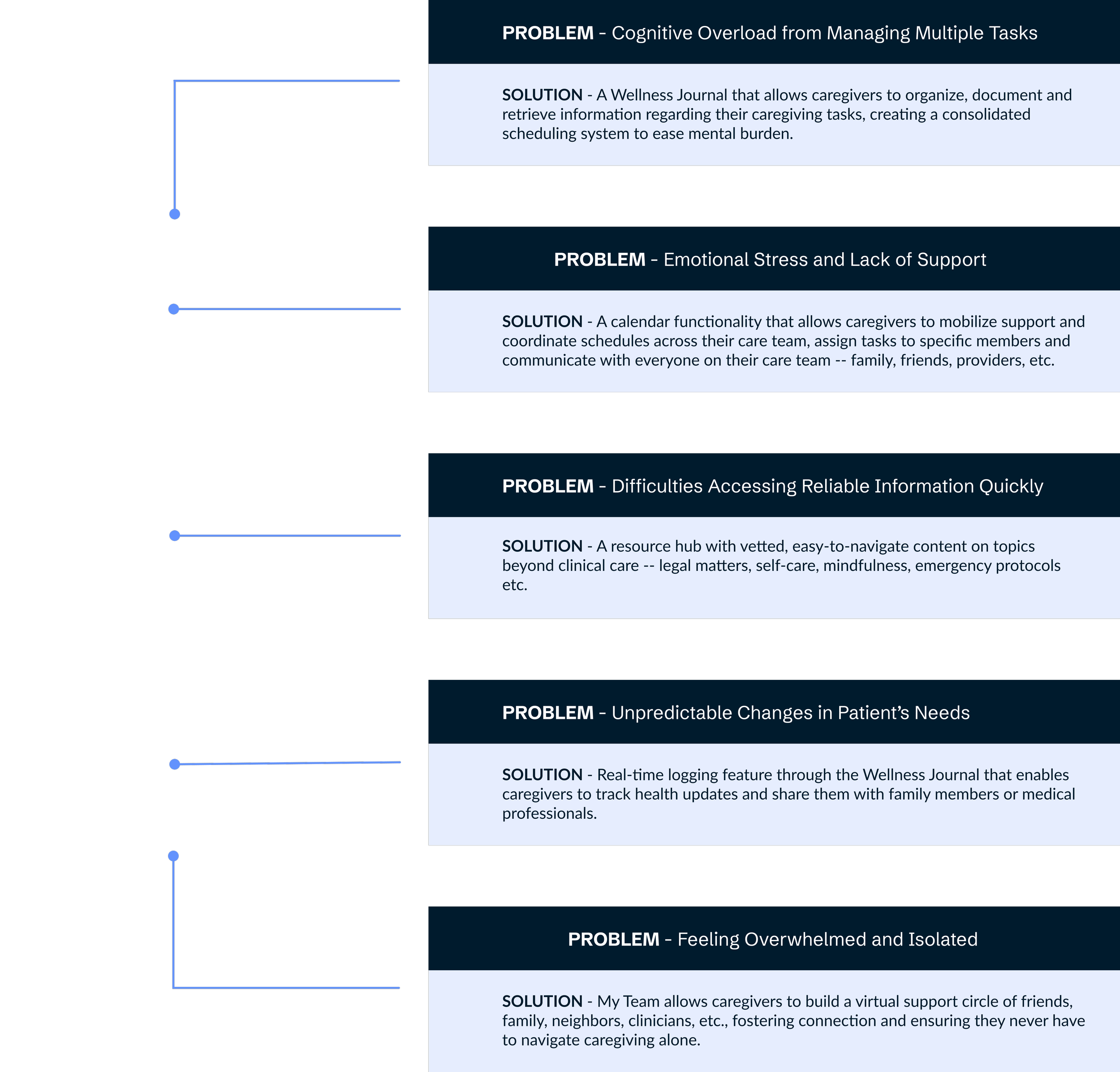Care Connect is a mobile app designed for Alzheimer’s Disease caregivers.
CASE STUDY
Consolidating mobilization of support and information retrieval within a single mobile platform.
TYPE
UX Research, UX Design, Rapid Prototyping
DURATION
2 weeks
TEAM
Self-led with guidance from DesignLab Mentor and Group Crits
STAKEHOLDERS
Alzheimer’s Disease caregivers
Project Overview
About
Scoping the Project
In a 2022 report from the Alzheimer’s Association titled Alzheimer’s Facts and Figures, researchers shared that “59% of family caregivers of people with Alzheimer’s or other dementias rated the emotional stress of caregiving as high or very high.”
To define the problem scope, I leveraged the Activity-Centered Design (ACD) model from Don Norman's The Design of Everyday Things. This approach focuses on identifying essential tasks and workflows that users need to perform in order to identify the most critical aspects of the solution, ensuring that the project remains tightly aligned with its core objectives.
I did some research to understand the daily experiences of AD caregivers at a high level, using these findings and the Activity-Centered Design model to identify and broadly categorize the key processes and tasks in a caregiver's day.
The Alzheimer’s Caregivers Network and Alzheimer’s Association are nonprofit organizations dedicated to providing support for AD caregivers and sharing information about the condition. The caregivers’ personal accounts help us understand what a day in their life typically looks like from beginning to end.
High-Level Daily Activities
I concluded that caregivers have a high volume of tasks that are diverse and dynamic in nature —
∴
They might be able to benefit from something that helps them manage these tasks in a way that affords emotional and social support, real-time information updates and decision-making support, and easy integration with existing routines.
More than 11 million Americans shoulder the immense responsibility of unpaid care for loved ones living with Alzheimer’s Disease or other dementias. Behind the staggering statistics—where 67% of caregivers are women, and nearly a third are seniors themselves—lie stories of unwavering strength, resilience, and sacrifice. These caregivers devote nearly 17 billion hours each year navigating relentless emotional, financial, and physical challenges.
For many, this journey is marked by love and duty but also profound stress. 59% of caregivers report high emotional strain, and they face twice the hardship compared to those caring for individuals without dementia. Managing every aspect of a patient’s life—from administering medication and logging changes in health to providing transportation and handling legal information—leaves caregivers stretched thin.
As I delved into this problem space, it became clear that Alzheimer's caregiving is not just about physical care but an overwhelming cognitive and emotional load that demands better support solutions.
01. Research
To add more context around this problem space, I learned about what trends and patterns currently existed in the AD Therapeutics / Health Tech market:
With this primer on the industry and an initial but still very basic understanding of what caregiving duties actually entailed, I began the design research process to delve more deeply into the lived experiences of Alzheimer’s Disease caregivers.
To kick off the design research, I defined a few big research questions to answer —
Interviews
To gain deeper insights and uncover day-to-day caregiving experiences, common challenges, and current tools or workarounds caregivers use, I conducted:
3 Semi-Structured Interviews: with current Alzheimer's caregivers.
A Survey with 10 Caregivers: recruited from Alz Connected, Aging Care, and AlzheimersDisease.net caregiver support forums and one AD Caregivers Facebook group that I was able to join with moderator approval.
Data synthesis through qualitative (4x4 matrix from interviews) and quantitative (survey analysis) methods, providing a comprehensive understanding of user insights and patterns to inform thoughtful design solutions.
02. Define
As I analyzed the interview data and referenced the existing literature and available resources, there were a few patterns that emerged. Most poignantly, the caregiving process for Alzheimer’s patients is an emotionally and physically demanding one that often leaves caregivers overwhelmed, isolated, and struggling to balance their own well-being. In addition, caregivers rely heavily on routines to manage care effectively but face challenges in staying organized and engaging their loved ones meaningfully. Thus, many use fragmented tools but would find a simplified, integrated solution tailored to their unique needs useful. Caregivers themselves struggle with social isolation and lack of emotional support, highlighting the importance of community and accessible resources.
The themes identified across the data led to the creation of three primary insights.
HOW MIGHT WE?
How might we design a support system that helps caregivers manage daily tasks, access self-care resources, and mobilize support from their social circles to ease the emotional and practical demands of caregiving?
03. Ideate
While this project did require a digital solution, the digital approach also seemed especially well-suited to addressing caregivers’ needs, offering them a scalable, accessible, and user-friendly tool to navigate their challenges. After ideating some potential digital solutions, I narrowed the possibilities down to deliberate further.
I decided to move forward with Solution #1 because I felt it offered the most comprehensive approach while still remaining within the project scope and timeline. I also felt that the cons of this solution could be more easily tackled through the design of the app itself as opposed to the other solutions.
To begin structuring the app’s information architecture, I created a mobile app map that outlined content hierarchy + feature relationships. I used the map to then build task / user flows to define the granular user interactions within the app and determine the necessary screens for effective task completion.
I then drafted some rough low-fidelity sketches of different layout ideas, creating a skeleton to work with for successive steps. I wanted to generate a variety of quick ideas that could be further iterated upon as opposed to spending a lot of time on a few highly detailed ones.
Finalizing the rough sketches of the mobile app allowed me to clearly understand the visual direction I was headed in and helped me create mid-fidelity wireframes to add more precision to the sketches I had on paper.
Refinement
Through ongoing iteration of the low-fidelity wireframes, I was able to start finalizing the UI and move on to creating higher-fidelity wireframes—prioritizing accessibility, clarity, and user-centric functionality. I wanted to ensure the visual design remained accessible, featured intuitive navigation and included simplified interactions to accommodate varying levels of tech literacy.
Caregivers can access resources to support their own self-care / personal needs and can also communicate with their care team.
Caregivers can manage active medications and track changes in activities in the ADL section of the Wellness Journal.
Wellness Journal features a symptom tracker to measure, reference and categorize a variety of symptoms over time.
Calendar features allows mobilization and coordination of support across a care team that is personally set up by the caregiver.
04. Prototype
With key insights from my research, I developed a high-fidelity prototype to demonstrate how Care Connect streamlines task management and emotional support for Alzheimer’s caregivers. This interactive mockup showcases the core user flow, including onboarding, task scheduling, and support network features, ensuring an intuitive and accessible experience. Designed with real user pain points in mind, the prototype allows for usability testing and iteration, ensuring the final product effectively meets caregiver needs.

